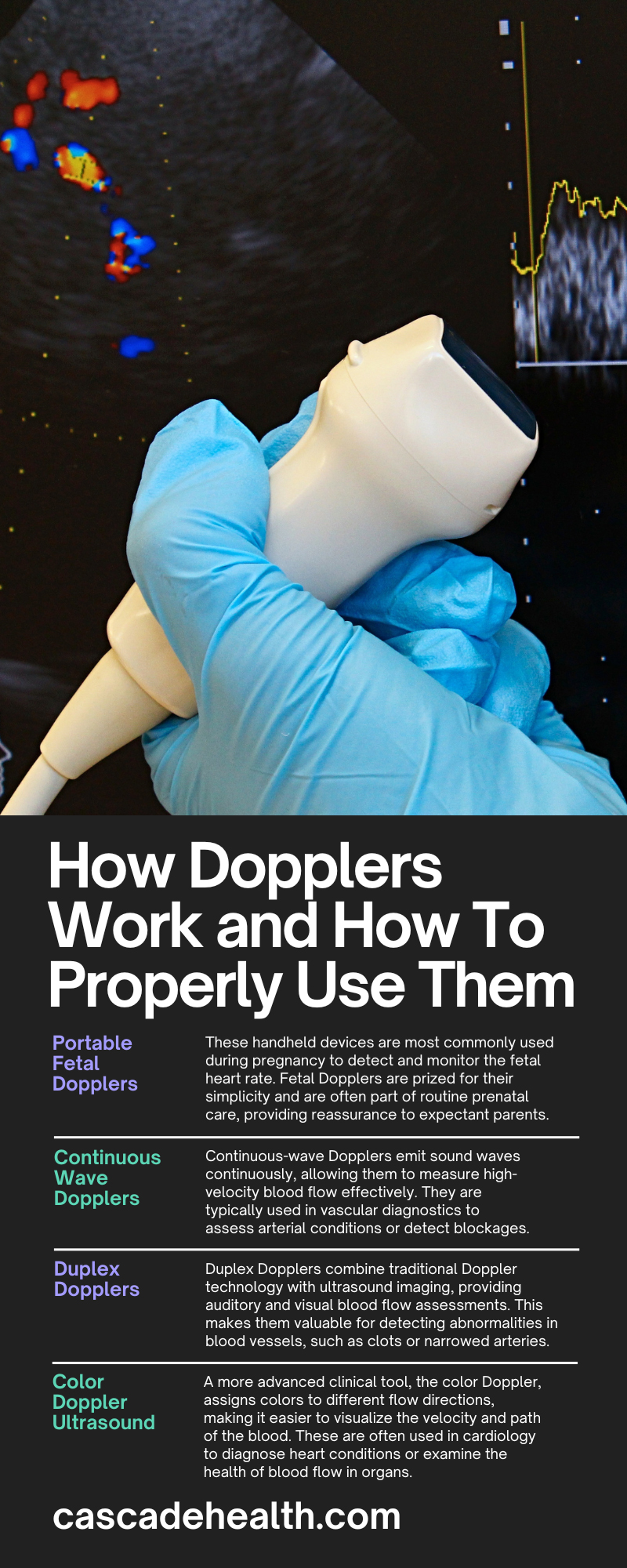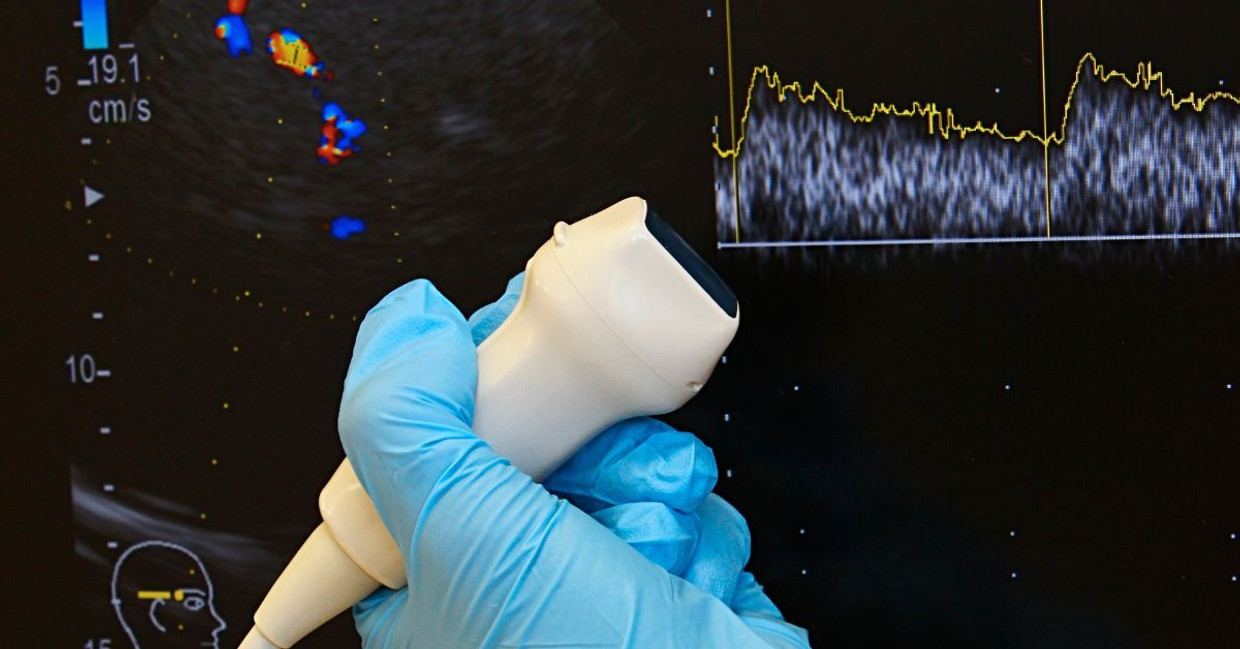How Dopplers Work and How To Properly Use Them
Dopplers are invaluable technology in healthcare, playing a significant role in noninvasive diagnostics and monitoring. Often used to detect fetal heart rates or assess blood flow in arteries and veins, they have become vital tools for healthcare professionals. Understanding how Dopplers work and learning how to use them effectively can greatly enhance accuracy and efficiency in clinical settings.
We will discuss how Dopplers work and how to properly use them. Whether you're new to Doppler devices or looking to refine your technique, this guide is designed to equip you with practical knowledge.
Understanding Doppler Technology
At its core, Doppler technology is based on the Doppler effect, a principle named after Austrian physicist Christian Doppler. The Doppler effect observes how the frequency of sound waves changes relative to an object's motion. For instance, when an object emitting sound moves toward you, the sound waves "compress," creating a higher frequency. Conversely, as the object moves away, the waves "stretch," lowering the frequency.
Medical Dopplers utilize this principle to detect and measure blood flow or fetal heartbeats. A Doppler device emits high-frequency sound waves into the body. When these sound waves encounter moving blood cells, they are reflected back to the device at a different frequency. The device then processes this information to create an audible sound or visual representation of the flow.
The ability to measure blood flow or heart rates without invasive procedures has made Dopplers a mainstay in healthcare. They are often employed in obstetrics, vascular diagnostics, and even cardiology to monitor patient health conveniently and effectively.
Different Types of Dopplers and Their Uses
Several variations of Dopplers are available to suit specific medical needs, each offering unique capabilities to aid professionals in their work.
Portable Fetal Dopplers
These handheld devices are most commonly used during pregnancy to detect and monitor the fetal heart rate. Fetal Dopplers are prized for their simplicity and are often part of routine prenatal care, providing reassurance to expectant parents.
Continuous Wave Dopplers
Continuous-wave Dopplers emit sound waves continuously, allowing them to measure high-velocity blood flow effectively. They are typically used in vascular diagnostics to assess arterial conditions or detect blockages.
Duplex Dopplers
Duplex Dopplers combine traditional Doppler technology with ultrasound imaging, providing auditory and visual blood flow assessments. This makes them valuable for detecting abnormalities in blood vessels, such as clots or narrowed arteries.
Color Doppler Ultrasound
A more advanced clinical tool, the color Doppler, assigns colors to different flow directions, making it easier to visualize the velocity and path of the blood. These are often used in cardiology to diagnose heart conditions or examine the health of blood flow in organs.
Power Dopplers
Power Dopplers are ideal for detecting low or slow blood flow in small vessels. They offer higher sensitivity than traditional color Dopplers. Though they do not show flow direction, they are valuable for specific applications in vascular medicine or organ imaging.
Understanding which Doppler to use in a given scenario ensures you harness the full potential of this technology.
Proper Usage of Dopplers
Using Dopplers correctly is crucial for obtaining accurate readings and maintaining the device's longevity. Below are actionable tips to help you get the most out of your Doppler.
Read the Manufacturer's Manual
Every Doppler model is unique, with specific features and operating guidelines that may differ from one another. To ensure safe and effective use, it’s essential to carefully review the user manual before getting started. This will help you understand how to handle the device correctly and know its capabilities and limitations.
Ensure Device Calibration
Routine calibration is essential to ensure the accuracy and reliability of your Doppler device. To achieve the best results, it is important to carefully follow the manufacturer’s instructions during the calibration process. Additionally, regular checks should be performed to maintain consistent performance and avoid potential inaccuracies over time.
Use Gel for Better Results
Applying a medical-grade ultrasound gel reduces air interference, allowing for more accurate and reliable readings. The gel creates a seamless connection between the transducer and the skin, ensuring the clear transmission of sound waves. This improves the overall quality of the imaging or diagnostic results, providing better insights for medical professionals.
Position Correctly
Hold the probe at the recommended angle to ensure accurate data collection. Carefully position it over the desired area, ensuring it is steady and properly aligned. Adjust the probe gently to maintain proper contact and achieve the best results if necessary.
Maintain Hygiene
Hygiene is paramount, especially in healthcare settings, where maintaining cleanliness can directly impact patient safety. To ensure proper sanitation and prevent cross-contamination, it is essential to clean the device probe thoroughly with appropriate disinfectants after each use. This simple step helps uphold the highest standards of hygiene and safeguards patients and healthcare providers.
Use in a Quiet Environment
Background noise can significantly interfere with the accuracy of Doppler signals, making it harder to obtain precise readings. To ensure optimal performance, it is important to use the device in a quiet environment with minimal distractions. This step will greatly improve sound clarity and enhance the overall effectiveness of the device.
Monitor Battery Life
It is essential to check the Doppler batteries regularly to ensure they function correctly. If the batteries are running low, make sure to charge or replace them promptly. This helps prevent any interruptions during critical use when the device is needed most.
Know the Limitations
While Dopplers provide excellent monitoring capabilities, they are not a substitute for diagnostic tools. These devices are invaluable for tracking certain medical conditions, but they have limitations when it comes to providing a complete picture of a patient's health. For a comprehensive diagnosis, always consult other medical technologies or healthcare professionals.
Practice Proper Storage
Protect your Doppler to ensure its longevity and optimal performance. Store it in a proper case to keep it safe from dust, scratches, and other potential damage. Keep it away from moisture, direct sunlight, and extreme temperatures to maintain its functionality over time.
Seek Training if Needed
If you’re unsure about your expertise with Dopplers, it might be a good idea to seek out additional support. Consider enrolling in professional training or attending workshops designed to improve your skills. This can help boost your confidence and accuracy when using the device, ensuring better outcomes.
Elevate Patient Care with Dopplers
Doppler technology continues to revolutionize healthcare, providing healthcare professionals with a reliable, non-invasive way to assess and monitor patients. By understanding how Dopplers work and how to use them properly, you can harness this impressive technology to its fullest.
At Cascade Health Care, we’re passionate about providing healthcare professionals with the tools they need to succeed. Check out our range of pregnancy Dopplers today and see how they can enhance your patient care. Take your practice to the next level with our professional products.

Recent Posts
-
Must-Have Tools and Instruments for Obstetric Care
Obstetric care demands a unique blend of clinical expertise, intuitive patient management, and preci
-
Positions for Out-of-Bed Laboring During a Home Birth
For midwives, doulas, and other healthcare professionals who attend home births, facilitating a safe



